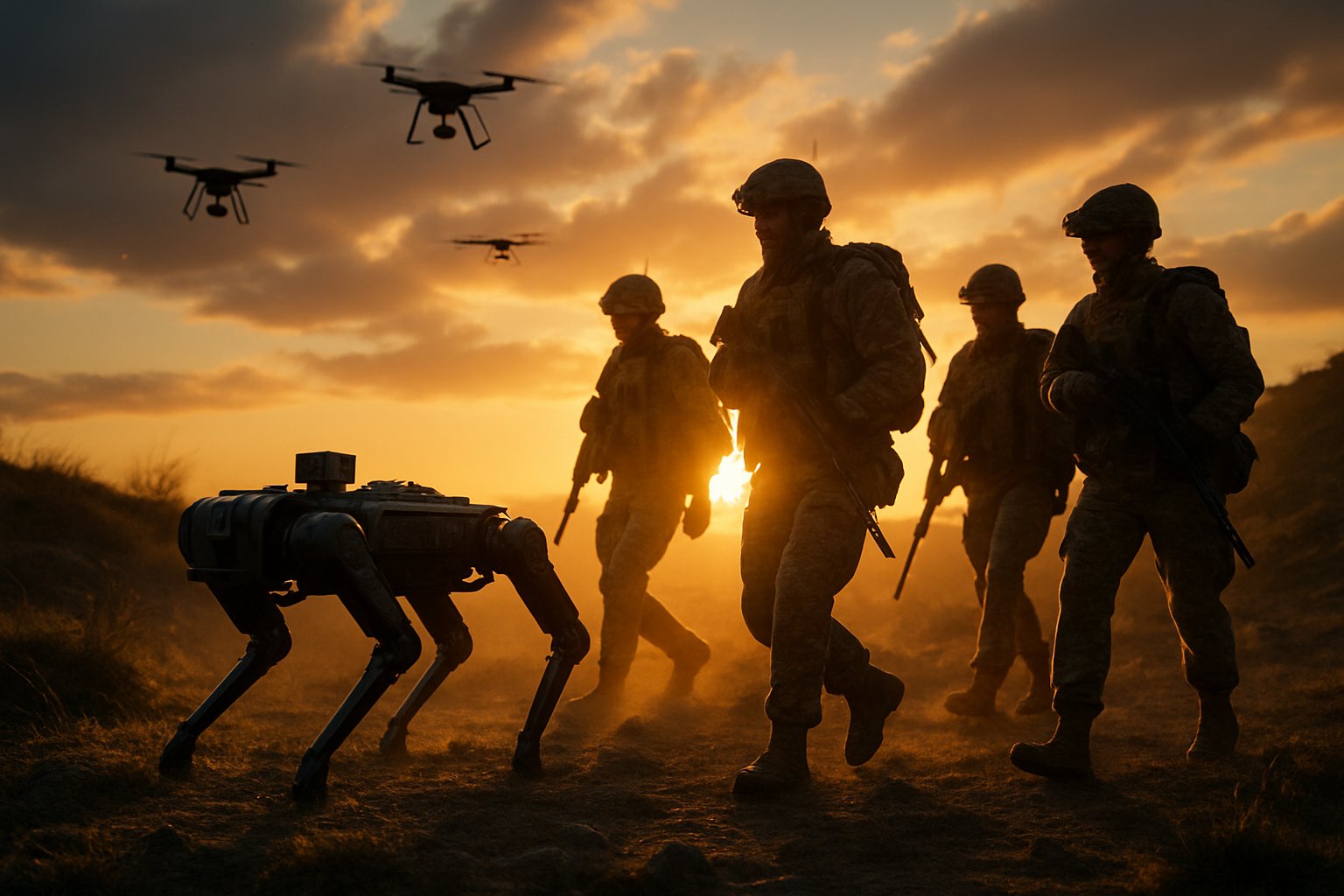
AI CERTS
19 hours ago
Pentagon pushes military AI deployment across forces
This report unpacks the latest developments, budgets, governance tools, industry moves, and talent issues shaping the U.S. Defense Department’s AI future.

Strategy Drives Rapid Expansion
November 2023’s “Data, Analytics & Artificial Intelligence Adoption Strategy” serves as the North Star. Moreover, the Chief Digital and Artificial Intelligence Office (CDAO) now orchestrates enterprise change. The blueprint prioritizes decision advantage, emphasizing battlefield decision support and logistics automation defense outcomes. Responsible AI principles remain baked into every milestone. Deputy Secretary Kathleen Hicks stressed that trust underpins every algorithm: “We must establish a trusted ecosystem,” she noted during the RAI Toolkit launch.
Consequently, program offices embed assurance checklists early. For example, Combined Joint All-Domain Command and Control (CJADC2) prototypes now include human-on-the-loop safeguards. Analysts observe that military AI deployment timelines shortened by integrating those governance steps upfront.
These strategic moves clarify intent and authority. However, translating strategy to code still demands sustained funding and disciplined execution.
Therefore, budget signals warrant closer inspection.
Budget Signals Ambitious Scale
The FY-26 President’s Budget earmarks $13.4 billion for autonomy and uncrewed systems. Approximately $9.4 billion targets aerial platforms, while $1.7 billion funds maritime vehicles. Additionally, $1.2 billion covers enabling software, vital for next-gen warfare technology.
- $200 million – audit readiness automation
- $150 million – business systems modernization
- 60+ lines of effort – Responsible AI pathway
Meanwhile, prior AI requests hovered near $1.8 billion. Therefore, lawmakers now scrutinize absorptive capacity and oversight. GAO has already published reviews highlighting acquisition friction and data quality gaps.
Nevertheless, larger appropriations reinforce White House confidence in military AI deployment. Yet, continuing resolutions still disrupt contract start dates. Craig Martell, then CDAO, warned, “We must cannibalize some things to keep others alive.”
These fiscal dynamics underscore high ambition. However, ethical guardrails must match that scale.
Governance Ensures Ethical Guardrails
The Responsible AI Toolkit translates lofty principles into worksheets, checklists, and red-team templates. Furthermore, more than sixty implementation tasks track compliance. Program managers now document model lineage, dataset provenance, and human override points. Consequently, inspectors can audit systems before field use.
In contrast, earlier pilots lacked such rigor. Today, threat analysis AI models inside intelligence workflows face mandatory red-teaming to expose bias or hallucinations. Moreover, assurance “scaffolding” captures telemetry across the lifecycle. These steps assure both commanders and the public.
Still, GAO urges clearer acquisition guidance on intellectual property and sustainment. Without standard clauses, the Pentagon risks vendor lock-in. Therefore, governance will evolve alongside technology.
Such guardrails enable confident scaling. Industry partners already respond with accelerated prototypes.
Industry Accelerates Field Testing
Companies including Anduril, Palantir, and Shield AI are forming consortiums. Their goal: deliver edge-to-cloud stacks that bridge classification levels. Consequently, data labeling, model training, and deployment pipelines move faster.
For instance, Palantir and Anduril recently announced a secure pipeline architecture supporting battlefield decision support and threat analysis AI workloads. Shield AI’s Hivemind autonomy now flies Navy UAS prototypes, showcasing next-gen warfare technology in contested environments.
Nevertheless, industry leaders cite data rights uncertainty as a lingering obstacle. They advocate clearer guidance to protect government flexibility while rewarding private R&D.
These industry moves cut experimentation time. However, talent remains the decisive factor for enduring advantage.
Workforce And Talent Gap
Commercial salaries lure top engineers away from government labs. Consequently, the Defense Department competes fiercely for AI scientists, MLOps experts, and cyber specialists. Moreover, budget instability hampers long-term hiring commitments.
Therefore, services expand scholarship programs and rapid hiring authorities. Additionally, the CDAO offers rotational fellowships pairing coders with operators. Such exposure accelerates logistics automation defense prototypes and improves battlefield decision support models.
Nevertheless, analysts argue that without stable funding, retention remains fragile. GAO recommends formal workforce metrics aligned with mission priorities.
Talent initiatives will influence how quickly military AI deployment scales. Future operational concepts already assume algorithmic advantage.
Future Operational Pathways
DoD planners envision AI-enabled sensor fusion, predictive maintenance, and autonomous swarming. Consequently, attritable platforms may saturate adversary defenses while saving pilot lives.
Moreover, enterprise bots will audit transactions, freeing analysts for higher-value tasks. As threat analysis AI matures, commanders gain earlier warnings, thus shrinking decision cycles. Simultaneously, next-gen warfare technology integrates with CJADC2 networks, linking shooters and sensors across domains.
However, adversaries also pursue similar tools. Therefore, responsible acceleration becomes a strategic necessity. A vibrant assurance ecosystem, backed by transparent oversight, can maintain democratic legitimacy.
These future pathways highlight escalating demand for specialized training. Professional certifications offer one avenue.
Certification And Next Steps
Defense civilians and contractors increasingly pursue credentials that validate AI governance skills. Professionals can enhance their expertise with the AI for Government™ certification. The curriculum covers policy, ethics, and technical fundamentals aligned with DoD guidance.
Additionally, courses emphasize logistics automation defense use cases and robust evaluation of battlefield decision support systems. Consequently, graduates help reduce assurance bottlenecks, accelerating military AI deployment.
These learning paths complement on-the-job experience. However, sustained leadership support and stable funding remain prerequisites for lasting impact.
Certification momentum signals cultural change. The concluding section distills key insights and actions.
Conclusion
The Pentagon’s push for full-scale military AI deployment blends strategy, money, governance, industry innovation, and talent programs. Moreover, historic budget increases fund uncrewed platforms and enterprise analytics. Responsible AI frameworks now embed trust into every algorithm. Industry partners tackle data readiness while advocating clearer IP rules. Workforce initiatives aim to retain scarce expertise.
Nevertheless, data quality, acquisition friction, and budget uncertainty still loom. Consequently, tech leaders should track oversight findings, engage industry consortiums, and pursue targeted training. Explore the linked certification to deepen knowledge and help shape secure, ethical, and effective defense AI.



